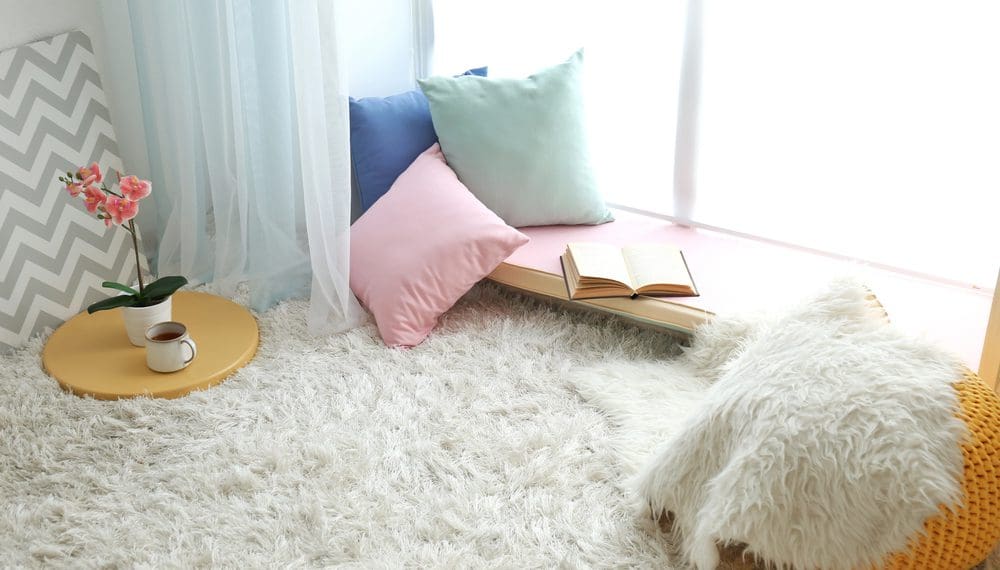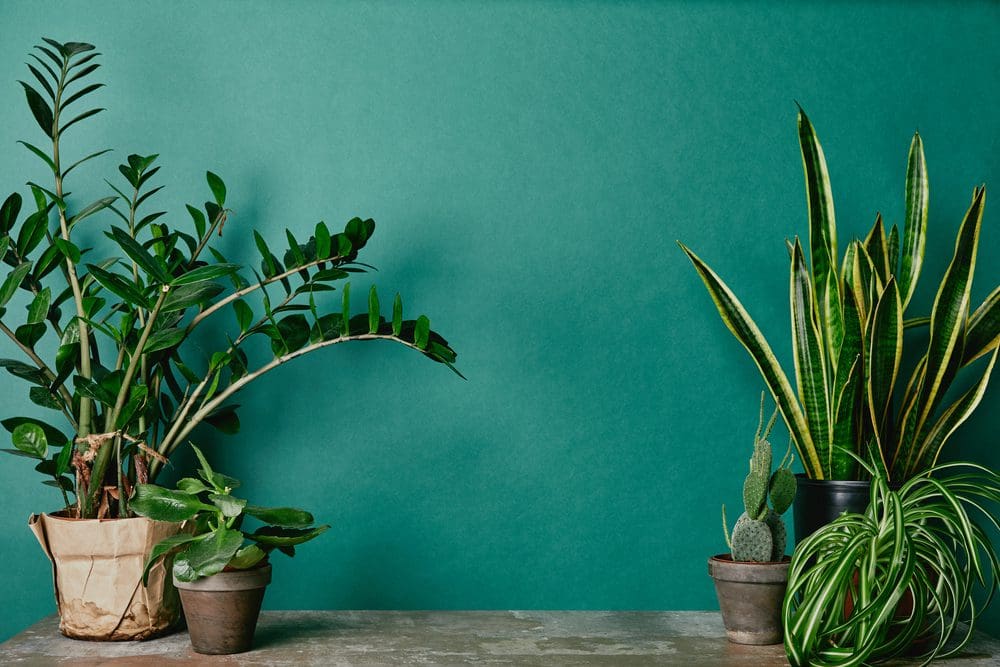Full Disclosure: Clicking on these links could mean a tiny commission for me, at no extra cost to you.
Our surroundings can play a crucial role in shaping our mental well-being, yet we often overlook the profound impact our environment can have on our psychological state. From the colors on our walls to the air quality in our homes, every aspect of our surroundings can influence our mood, productivity, and overall mental health. But many wonder, how can I make my house calmer? It’s easier than you think! With a few simple tweaks, you can create a soothing environment that nurtures your mind, body, and soul.
From setting up a calm down corner to adding self-care items and healing stones, these easy adjustments will transform your space into a stress-free retreat.
In this article, we’ll explore how your environment affects mental wellness and discover small, actionable changes you can make to create a more positive and nurturing space. By understanding the connection between our surroundings and our mind, we can harness the power of our environment to boost our mental well-being and lead happier, healthier lives.
Tips for Creating Personal Calm Spaces for Mental Recharge
In our busy lives, it’s crucial to have designated spaces for relaxation and mental recharge. These personal retreats can serve as sanctuaries to decompress, practice mindfulness, and nurture our mental health.
Start Your Self-Care Journey Today
You deserve a moment that’s just for you. The Silk + Sonder Journal is a beautifully crafted, guided self-care tool designed to help you feel more grounded, more inspired, and more in control of your mental wellness.
With calming layouts, therapeutic prompts, and mindfulness exercises, you’ll build habits that nourish your mind, body, and soul — one page at a time.
1. Personalize Your Space with Meaningful Objects
Surrounding yourself with items that hold personal significance can boost your mood and create a sense of comfort. Consider displaying family photos or artwork, souvenirs from memorable trips, or objects that represent personal achievements. Decor with inspiring quotes are also beautiful additions to a calm home.
They’re similar to the inspiring custom silicone wristband we used to wear back in the day (did I just age myself)? These wristbands can serve as daily reminders of personal goals or calming affirmations, adding a touch of motivation to your environment.
2. Design a Meditation Corner or Calm Corner
Carve out a small area dedicated to meditation or quiet reflection in your home. This space doesn’t need to be large; even a corner of a room can suffice. Have a comfortable cushion or chair in the area. Use soft, natural textures and add a small plant or natural element.
Whether you’re managing anxiety, meditating, or just unwinding after a long day, having a calming space offers you a beautiful, peaceful space where you can relax and reset.
What to Include in Your Calm Corner:
- Fidget rings or worry rings for soothing repetitive motions.
- A cozy chair or soft floor cushions.
- Crystals for anxiety, like amethyst or rose quartz, for grounding energy.
- Self-care items like journals, coloring books, or mindfulness cards.
Having a dedicated space signals to your brain that it’s time to slow down and relax.
3. Bringing Nature Indoors
Biophilic design is an approach that seeks to connect building occupants more closely to nature. This concept recognizes our innate need to be connected with the natural world and its positive impact on our mental health. By incorporating elements of nature into our indoor environments, we can reap the benefits of the outdoors even when we’re inside.
Plus, plants help improve air quality and create a sense of calm. Studies also confirm that indoor plants can lower stress and boost mood.
- Lavender: Naturally relaxing and great for sleep.
- Aloe Vera: Purifies air and requires little maintenance.
- Peace Lily: Beautiful and known to reduce toxins in the air.
If you’re looking for a low-maintenance option, consider these realistic faux flowers or crystal healing stones to bring natural energy into your space.
To take it a step further, scheduling an air health assessment for your home can help identify hidden pollutants that may be impacting your mood, energy, and overall wellness.
4. Add Water Features for Tranquility
The sound of flowing water can have a calming effect on our minds. Consider incorporating a small indoor fountain or water feature into your space. The gentle sound of water can help mask background noise and create a more peaceful environment, promoting relaxation and reducing stress.
Speaking of water, small practical improvements that go beyond the classic fountain you think about when you decorate your home can have a significant impact too. For example, implementing a water-saving upflush toilet system contributes to a more eco-friendly home and reduces stress associated with high water bills and environmental concerns. While it doesn’t necessarily pertain to your physical home per se, it’s effects definitely contribute to how you feel about/in your space.
5. Use Natural Light for a Boost of Mental Wellness
Exposure to natural light aids in maintaining a healthy circadian rhythm and promoting good mental health. Maximize natural light in your space by keeping windows unobstructed and using light, reflective colors on walls. If you’re dealing with limited natural light, consider using full-spectrum light bulbs that mimic natural daylight.
Harsh lighting can feel overwhelming, while soft, warm lighting promotes relaxation. Here are some tips to help you make your house calmer:
- Swap out bright white bulbs for warm-toned LED lights.
- Use lamps or fairy lights instead of overhead fixtures.
- Himalayan salt lamps for a soft, natural glow.
- Candles for a soothing evening atmosphere.
- Dimmer switches to adjust brightness based on your mood.
Lighting has a direct impact on your stress levels, so make it work in your favor!
6. Know How Hues Affect Your Mood
Colors have a remarkable ability to influence our emotions and mental state. Different hues can evoke various feelings, from calm and relaxation to energy and excitement. Understanding the psychology of color can help you create an environment that supports your mental wellness goals.
Blues and greens are known for their calming properties. These cool colors, reminiscent of nature, like clear skies and lush forests, can help reduce stress and anxiety. Consider incorporating these hues into your bedroom or meditation space to create a serene atmosphere conducive to relaxation and restful sleep.
7. Balancing Colours for Harmony
To create a balanced and harmonious environment, consider combining cool and warm colors. For example, pair a calming blue with touches of energizing yellow to create a space that promotes relaxation and productivity. This balance can be particularly beneficial in multi-purpose areas of your home.
Color psychology plays a big role in how we feel in a space. Soft, neutral tones and nature-inspired shades can create a relaxing environment. Here are some colours to consider:
- Blue: Promotes tranquility and relaxation.
- Green: Refreshing and reminiscent of nature.
- Beige & Soft Gray: Warm, grounding, and comforting.
Consider incorporating these hues into your walls, decor, or furniture for a visually peaceful home.
Ready for Less Mess and Less Stress?
If clutter is draining your energy and adding to your anxiety, it’s time to clear the chaos. The Declutter Fast Program gives you the tools and motivation to take control — with simple, effective steps that work for any home and any lifestyle.
Start creating a calm, organized space that supports your mental well-being. Your peaceful, clutter-free life starts today.
8. Creating Tech-Free Zones
While technology has become an integral part of our lives, creating an environment that promotes a healthy relationship with our devices is essential. Balancing the benefits of technology with the need for digital detox can impact our mental well-being. Designate specific areas of your home as tech-free zones to encourage face-to-face interaction and mindfulness:
- The dining room: Promote meaningful conversations during meals
- The bedroom: Improve sleep quality by keeping devices out
- A reading or hobby corner: Encourage offline activities and relaxation
9. Implementing Digital Boundaries
Set clear boundaries for technology use to reduce stress and improve focus. Establish specific times for checking emails and social media. Use apps that limit screen time or block distracting websites. Create a digital sunset routine, turning off devices an hour before bed.
By thoughtfully integrating technology into our environment, we can harness its benefits while minimizing its potential negative impacts on our mental health.
10. Declutter for Instant Mental Clarity
A messy home can contribute to a cluttered mind. Start by eliminating unnecessary items, organizing your space, and keeping surfaces clean. Studies show that a tidy environment can reduce stress and improve focus.
- Try the “one-minute rule”: If a task takes less than a minute (putting away shoes, wiping the counter), do it immediately.
- Invest in self-care basket ideas—pretty storage solutions for a clutter-free home.
- Donate unused items to create space for calm and clarity.
Decluttering is about creating a peaceful atmosphere where you can relax and unwind easily. For help with decluttering, consider using this innovative digital program called Declutter Fast. This system guides you through every room, corner and closet until you have officially created your ultimate calm space.
How Can I Make My House Calmer?
Creating a calmer home doesn’t require a complete makeover — just small, intentional changes that make a big impact. Whether it’s setting up a calm corner, using fidget rings while at home, or surrounding your calm space with crystals for anxiety relief, these simple tweaks can help transform your home into a peaceful retreat.
Ultimately, the goal is to create a space that reflects and supports your best self—a sanctuary that promotes calm, focus, and joy. By nurturing your environment, you’re nurturing your mind, setting the stage for improved mental wellness and a more fulfilling life.
Additional Resources
At Anxiety Gone, we believe in healing together. We’ve partnered with trusted wellness organizations to bring you the most effective tools, insights, and support. Some links may earn us a commission — always at no extra cost to you.
Join The Club
Connect with our private self-care community for daily support, exclusive tips, and inspiration. Join us today
Talk Therapy
Get matched with licensed therapists online through BetterHelp and begin your healing today. Start now
Hims/Hers
Receive personalized, affordable mental health care + medication from home — no insurance required. Learn more
Mental Health, Right to your Inbox
Subscribe to our newsletter for a place to rest your mental health and find ways to support your journey. Sign up
Emotional Freedom Technique
Tap your way to calm with scientifically backed stress relief. Our readers receive a 14-day free trial! Try EFT now
Mindfulness App
Access 2,000+ guided practices to support your mental health wherever you are + exclusive discount when you upgrade Try it
Online Breathwork
Experience calm and reset your nervous system with guided sessions and receive your first month free . Get started
Find a Helpline
If you need immediate support, visit our directory to find help near you. See helplines









